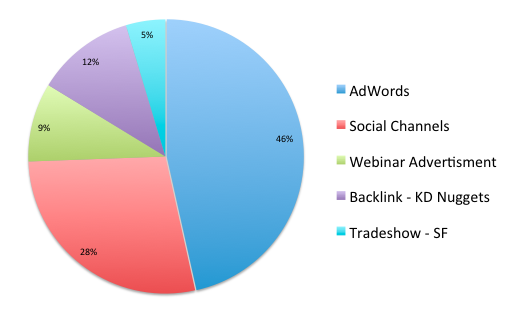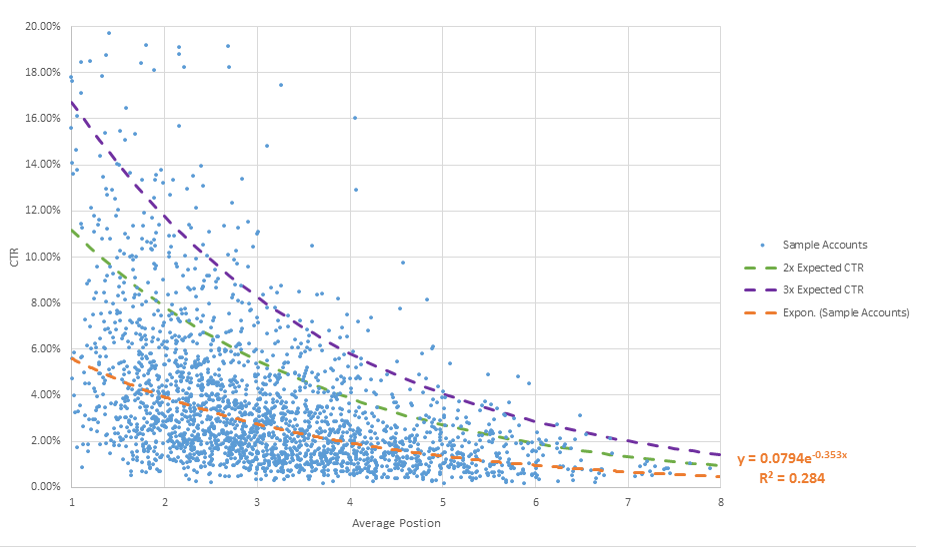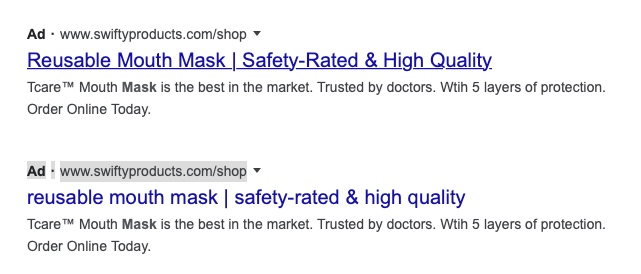Conversions are the epicenter of most modern businesses. Without them, revenue reduces and businesses struggle. It’s a common belief that Google Ads are the source of Conversions and most business manage to generate £2 for every £1 spent on the platform but what if you could get twice the number of Conversions for the same cost? You’d be mad to turn it down but many businesses do without knowing.
Most advertisers are concerned about two things. They’re concerned about Increasing the conversion rate and Reducing the Cost Per Conversion. Everything outside of these two goals are so far down the list that they don’t tend to matter. The trouble is that many small businesses don’t have the in-house expertise to navigate the endless jargon which gets in the way of optimizing a campaign. Terms like conversion code, conversion id or conversion pixel might be all too new and either stop progress in its tracks or delay investing the time to improve running campaigns.
Losing money is the biggest fear many small businesses have when thinking about Google Ads but you can find solace in this little fact. Based on established key performance indicators (KPIs) Google Ads still generates the highest conversion rate and ROI compared to any other marketing channel.

In this article, we’ll share some of the best ways to improve your Google Ads conversion rate with conversion tracking tools. The following items are used by our team to squeeze more out of Google Ad campaigns and are proven to work. Without further ado, here are 5 tips to help you double your Conversion Rate without breaking the bank.
1. Use Remarketing as a Conversion Rate Optimization (CRO) tool
Frequent readers of the Growth Architects blog will know this but we believe Remarketing is an effective way to improve your CRO and help persuade visitors who are on the fence to come back to your website to complete a conversion.
Many PPC advertisers have never considered using remarketing as a conversion rate optimization tool but introducing it will save you both time and budget. There is rarely a conversion action on someone’s first visit so remarketing helps you pull them back, remind them why your business is so fab and persuade them to proceed with the conversion.
When you employ remarketing, you’re simply showing an advert to people who viewed one of your adverts before. It’s an intelligent use of budget, as using remarketing is typically cheaper than using a Search Advert for the first time.
We know that conversion rates are usually higher when you’re consistent with retargeting. That is, when you repeatedly show your adverts to the folks who showed interest initially but didn’t proceed with a conversion at that time, you usually see a big up-tick in conversions when you show them a reminder advert that pulls them back to your site.
Most conversion tracker tools use conversion code embedded in the click to track how visitors got to the site. You may also include a conversion id such as a discount code to understand what ads led to a conversion action – e.g. If someone visited your site and left but showing them an advert with a 10% discount managed to draw them back in, you’ll know this technique should be used more widely for your business.
2. Align Ad Copy with Landing Pages
This is kind of a no-brainer by now but if you want your Google Ads to generate the most clicks possible, you have to align it with your landing page.
In Melanie Mitchell’s book (Unleash the Power of Paid Search), she states that when your ad copy aligns with your landing pages, your clicks will make a meaningful impact on and improve your quality score.
QS or Quality Score is important. Not only does it represent a KPI of your past campaign performance but it’s a super method of predicting the performance of your future campaigns. You want to change your conversion code when you change something in the campaign.
Google has publicly stated that the quality score is what they use to measure how effective or efficient your PPC campaign is. Higher quality scores mean that your ad copy reflects the content of your landing pages and thus better results will be the outcome.
On the budget side of things, if your quality score is higher it also means that your advertising costs will reduce. A higher quality score will mean a reduction in cost but it will also lead to a higher ad position in both search and display networks. Two birds, one stone.
If you send clicks to a landing page on ‘technology to create digital signatures’ but in your ad copy you state ‘click here for software to make your life easier’, there won’t be any alignment and your CPC will increase (in addition to your position driving lower). Align the copy of your ads with the copy of your landing page for best results.
3. Introduce Click-Through Rate Best Practices
Click Through Rate is a ratio that shows how often people see your ads and then click on your ads. The more people who click your ad and visit your landing page, the more people you’ll convert to purchasers. As a result, those who improve their Google Ads conversion rate will benefit more than those just setting up multiple ad variations.
There are a few things you can do to make your ads more clickable. We’ve listed a few below to help you along.
You can generate meaningful revenue from Google Ads if you know what you’re doing but you also have to distinguish between Google search ads and display networks. A solid understanding of that distinction will help you align your ads and create more compelling and clickable copy for your ideal customers.

Search network refers to Google’s ad platform that displays text-based adverts at the top and at the bottom of search results – these results are commonly referred to as SERP or Search Engine Results Pages. The display network delivers image-based ads like banners on websites, to users.
This differentiation is important because it can hugely affect click-through rates with display adverts generating far lower conversion rates but far higher impressions. Introducing conversion codes and conversion tracker tools are crucial for both because it provides powerful insights, specific to the type of ad that’s being monitored.
As promised, here are a few pieces of advice from our team to help you create clickable ads.
- Use title capitalization in your ad copy
Rather than using all lowercase letters, capitalize your title and your click-through rate will improve. Simple. You can see the difference in our example below.

- Think about the marketing search funnel
Targeting the right keywords leads to the best result. You’ve got to ask yourself questions like ‘Where is my ideal customer in their buying cycle?”. If your ideal customer already knows about your product, there’s no need to target generic headline keywords that give an overview or introduction. That’s wasted effort. It’s going to be far better for you if you target keywords that’ll generate income.
For example, if your ideal customer consists of HR specialists looking for software to improve their efficiency, you could target keywords that have “commercial intent” such as “buy software HR” or “best HR software UK”.
Your Click-Through Rate can be dramatically improved by tweaking your adverts copy, headline and placement. CTR is directly connected to the ad copy while the actual conversions are linked to the landing page.
- Be careful with ad placement
People click adverts. People click all sorts of adverts regardless of where they are positioned, even. But when your ad is placed in a premier position, you’ll experience higher CTR with your adverts.
Keywords with high “commercial” intent which rank highly receive 2/3 of all clicks. The rest are shared out amongst the lower ranking adverts. If your brand keywords have decent search volumes, you may also want to setup a campaign for them as well – the idea is to capture the click before someone else manages to.
Of course, those who search for brand keywords (e.g. Growth Architects PPC) are ready to buy or at least submit an enquiry form. Non-brand keywords will also yield higher click-through rates as long as they’re highly targeted.
The big take-away is do not rely on your intuition or assumptions when it comes to all of this. You have to test everything out and use a conversion tracker to record the outcomes. Often, your assumptions are incorrect and your customers are showing you but you’ve got to have the right systems in place to be able to see.
- Experiment with different match types Testing different match types is a sure-fire way of improving CTR. Exact and Phrase match keywords give you a leg up on the position that your ads will rank.
With broad match keyword types, you’ll reach more people than with the phrase and exact match keyword types but your click-through rate will be lower because the quality of the ads (as it pertains to the keywords) are not closely-tied with the exact intent of the user.
4. Implement Negative Keywords
Most search queries will not be relevant to your offer. Unfortunately, it’s the nature of the beast. Those searching for “marble worktops” could be looking for kitchen worktops, bathroom worktops or marble for outdoor BBQ areas so if you’re currently selling worktops for bathrooms, 2 out of 3 of these will not be relevant and will result in a low click-through rate.
Instead of getting these searches through, you can use negative keywords to block your ad from showing for certain variations of your target search term. Richard Thomas Conservatories, Extensions & Windows introduced negative keywords into their campaigns and within just 30 days experienced more leads than they could manage. We even needed to reduce the Google budget to reduce the amount of leads generated.
There are so many case studies out there where the benefit of implementing negative keywords has resulted in better performance.
If you’re thinking about the types of negative keywords you could place against your current campaign, here are a few ideas.
- Free
- Cheap
- Torrents
- YouTube
- Craigslist
- Worst
- Depressing
Negative keywords don’t just apply to search network ads. They also apply to ads on display network.
If you include “free” in your negative keyword lists, your ad on display network is less likely to appear on sites where the content matches the negative keyword. For example, if a blog post headline is “5 great ways to get free software” your ad won’t show up on that page.
The net benefit from using negative keywords is 1) Increased CTR, 2) Reduced CPC and 3) Boosted ROI.
5) Customer-focused wins every-time
Content Marketing is set around the principle of knowing what your ideal customer looks like and then creating content which appeals to them – around their desires, needs and current challenges.
In Google Display Network, you can easily add audiences to your ad groups. After all, you shouldn’t target everyone..and their mum.
If you’re going to be running ads on the Google Display Networks, understand that you need 3 elements to ensure your success. Your display ads must have the right messaging and target the right person and it has to be shown at the right time. This, results with conversion actions which we’re all looking for.
Summary
Although there are many conversion tracker metrics which you can monitor to measure the output of your campaigns, conversion rate continues to be the most important. It impacts ad copy and landing pages and there are always improvements you can be making.
Google Ads is an effective way to get traffic to your site fast. If you don’t have the time to learn or the funds to experiment or the time to wait for organic traffic to build up, using Google Ads is a great way of building a client-base with high quality customers.
Creating adverts for both search and display networks is important because both serve different purposes. One is not better than the other. Your goals should define which method is likelier to yield the results you want. The search networks are for direct response results whilst the display network ads are more or less for brand building. When you use display networks, you need to locate in-market buyers as this will lead to higher click-through rates for your ads.


